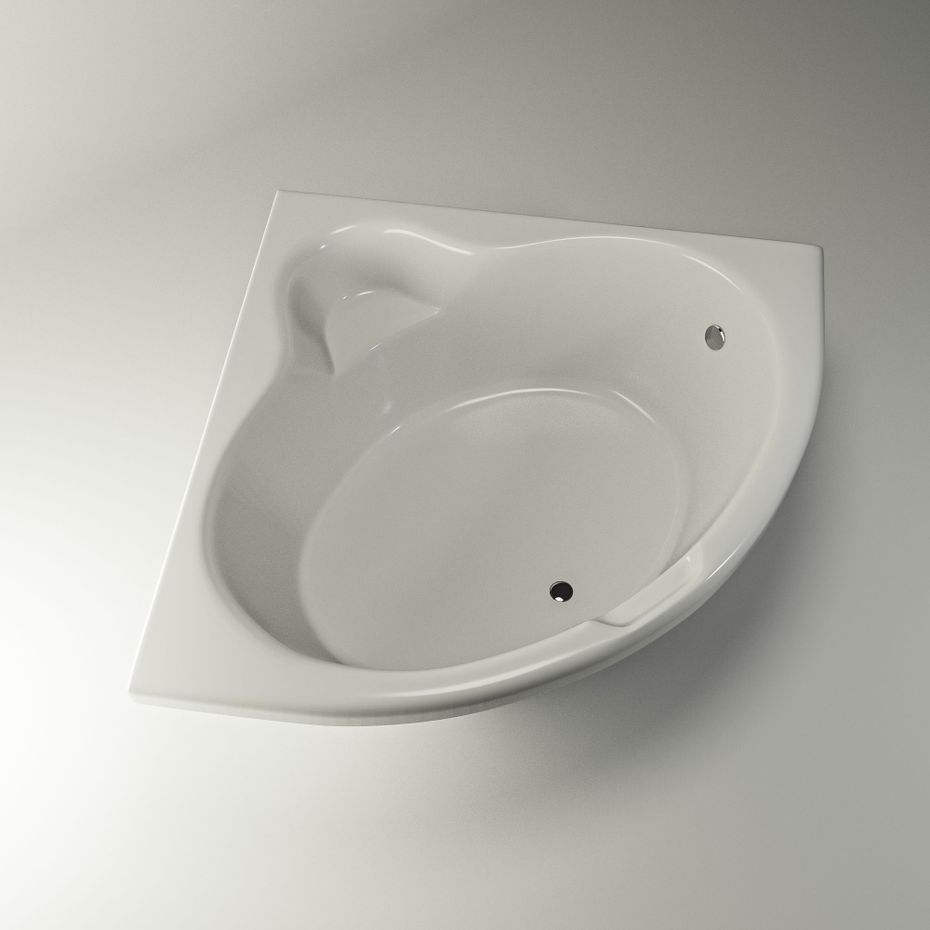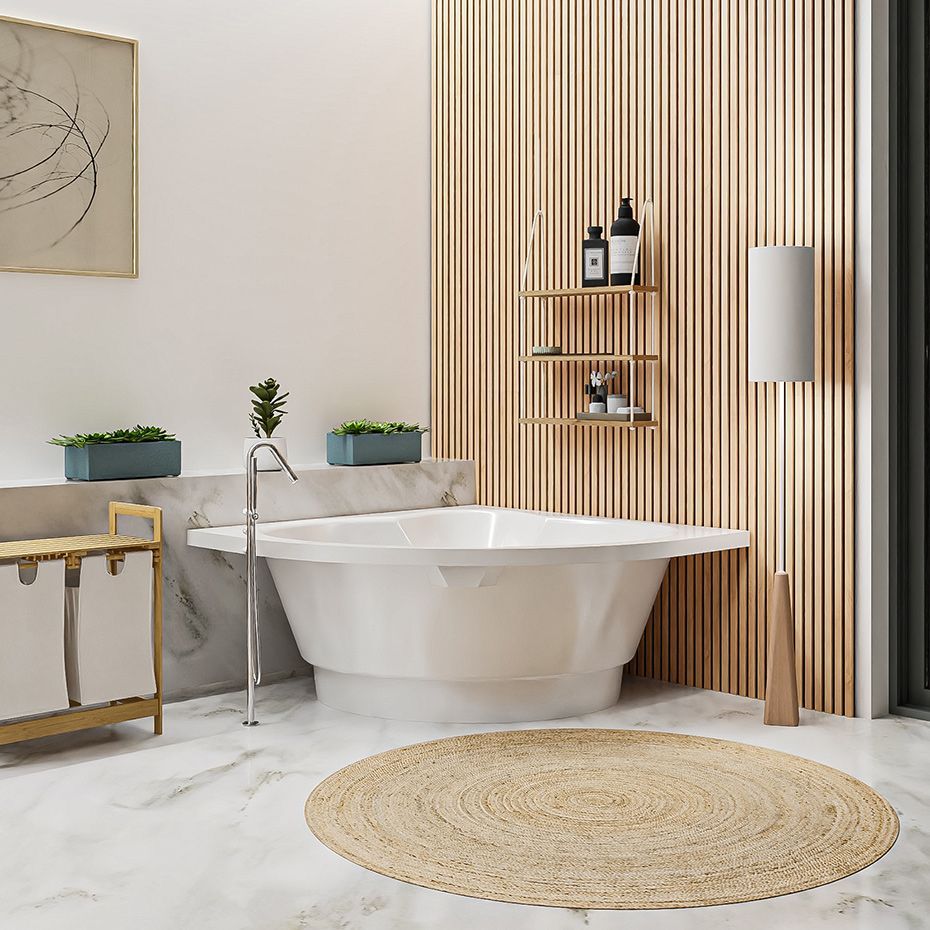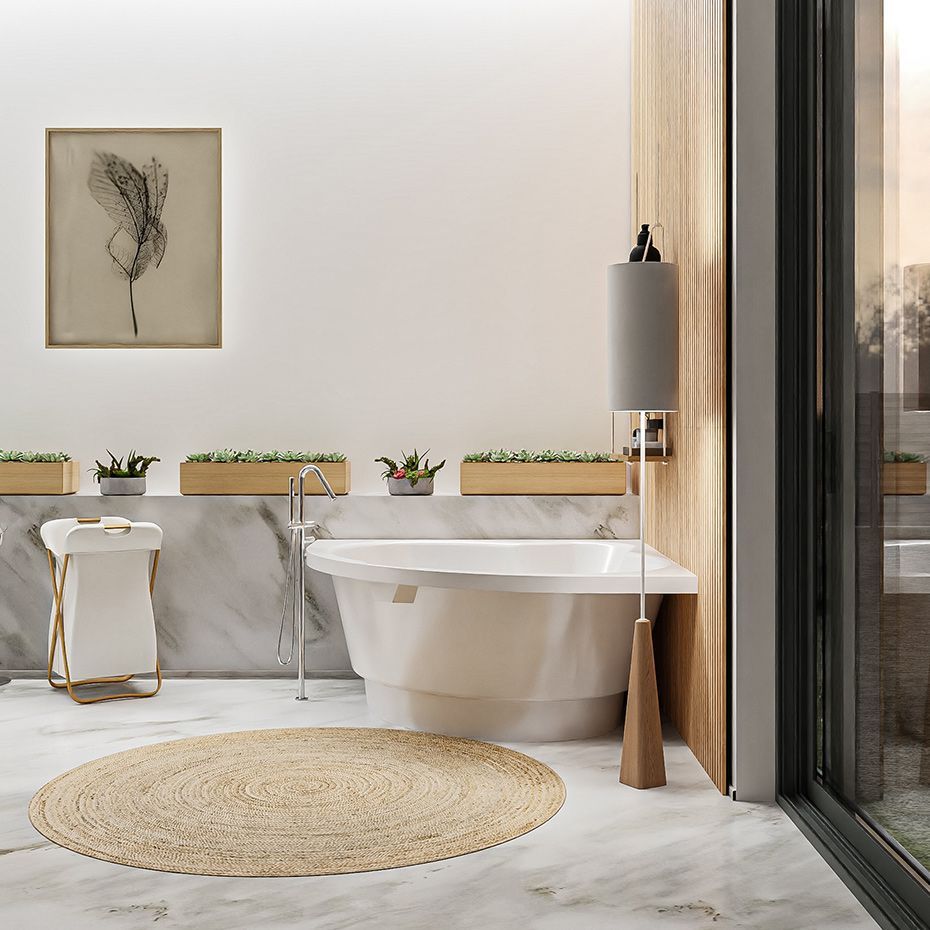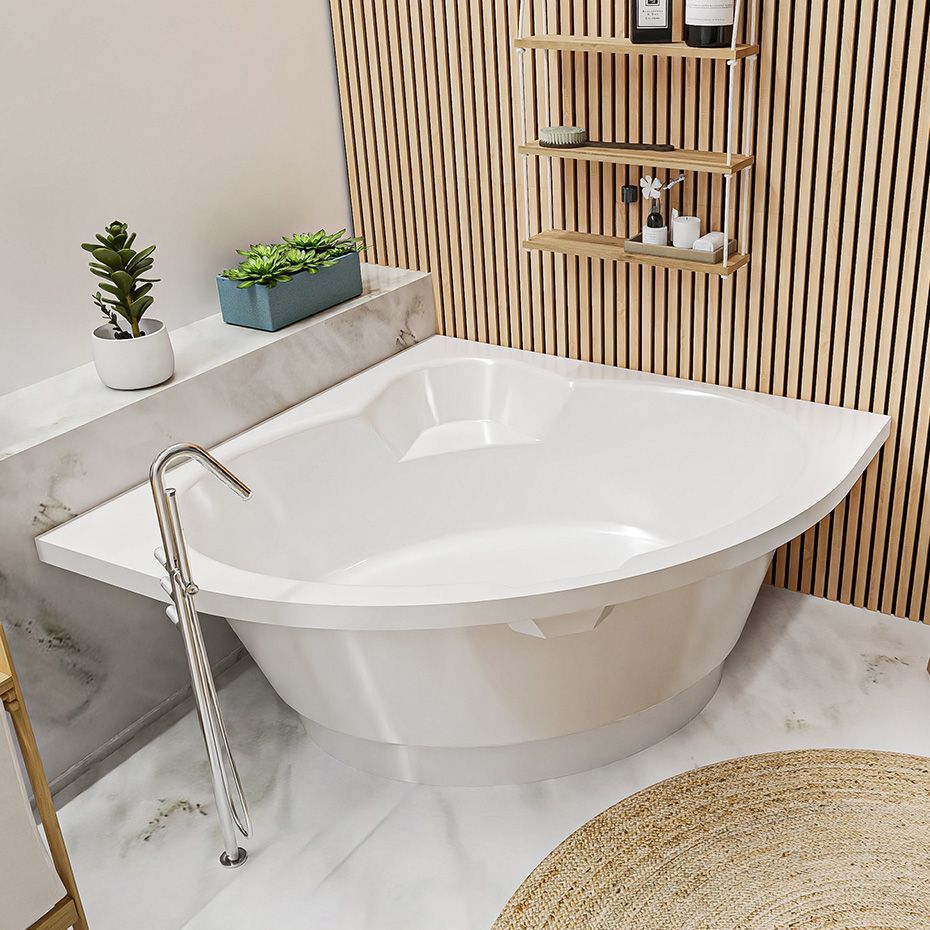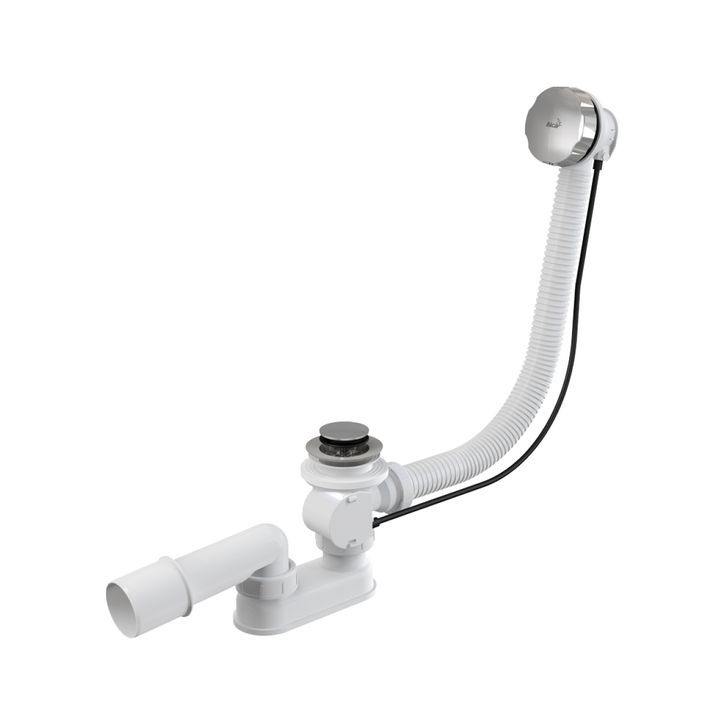FLY is a river on the island of New Guinea, flowing through Papua New Guinea and partially forming the border with Indonesia. The Fly River is the second longest river on the island of New Guinea, after the Sepik River, and the most voluminous river in all of Oceania. It is navigable.
The river was first discovered by Europeans in 1842 when British ship captain Francis Blackwood, commanding the vessel Fly, explored the western coast of Papua Bay. The river was named after his ship.
The river's delta, over 60 kilometers long, forms numerous lakes and oxbow lakes before emptying into the Gulf of Papua in the Coral Sea. The delta is dotted with low, swampy islands covered with mangrove forests and nipa palms. These islands are inhabited and cultivated. The residents of the Fly River delta engage in agriculture and hunting. They grow coconut palms, breadfruit, plantains, sago palms, and sugarcane.
Cast stone bath StudioStone FLY
FLY - a corner symmetrical bathtub made of cast marble is one of the most popular models, because its universal, spacious design significantly saves space in the room. An ideal option if every square centimeter of the bathroom counts - the original, balanced shape of the bathtub allows you to comfortably take both a bath and a shower. The bathtub is very capacious, the smoothed, smooth shapes are pleasing to the eye, the installation of the product is simple and fast, the water drain is located in the center of the bottom. The comfortable slope of the walls of the bowl and the wide sides of the bath will provide sufficient space for the hands (the wall sides can be either trimmed or extended), and the integrated seat above the water level in the center of the bath, which is so loved by children, can be used for its intended purpose or as a place for cosmetics.
The default color of the bathtub is white. If you need a unique color, the bathtub can be painted according to the Ral K7 Classic color chart.
Cast stone
Cast stone is a composite material consisting of polyester resins and natural marble chips. The process of making bathtubs from cast marble consists in combining all the components (natural component - 85%, chemical binding substances - 15%) into a liquid mass, which is poured into a mold for a bath using a special technology, and when the mass becomes hard, it is removed from the mold for further processing - the tub is ground, polished and covered with a protective coating.
Protective Coating
To preserve the product during use, a cast stone bathtub is also coated with an organic gel coat, which protects its surface from the effects of chemical and cosmetic products, and mechanical damage, and adds shine to the bathtub. This coating, also known as liquid glass, makes the bathtub's surface seamless and free of micropores, preventing bacteria from multiplying. Thanks to these high bactericidal properties, dirt and microbes do not accumulate on the surface, allowing the bathtub to serve for a long time without harming your health. Its resistance to stains and damage also makes maintaining the bathtub easy and hassle-free.
Service Life
A cast stone bathtub can last over 60 years! The material is strong and reliable, ensuring maximum durability with proper care and careful use. Cast stone combines numerous qualities: high mechanical strength, resistance to vibrations and loads, and restoring ability. It heats up significantly faster than other materials and retains the water's initial temperature much longer due to its low thermal conductivity and the 12-14 mm thickness of the bathtub walls. These products are resistant to chemical exposure and UV radiation, maintaining their original color and natural surface shine for years. StudioStone provides a 10-year warranty on its products!
| Size | 1450x1450 |
| Bath shape | Symmetric |
| Installation type | Wall-mounted |
| Availability of boards | With boards |
| Seat | Integrated |
| Capacity | Medium capacity |
| Volume, liters | 310 |
Has no feedback yet. Be the first to leave


